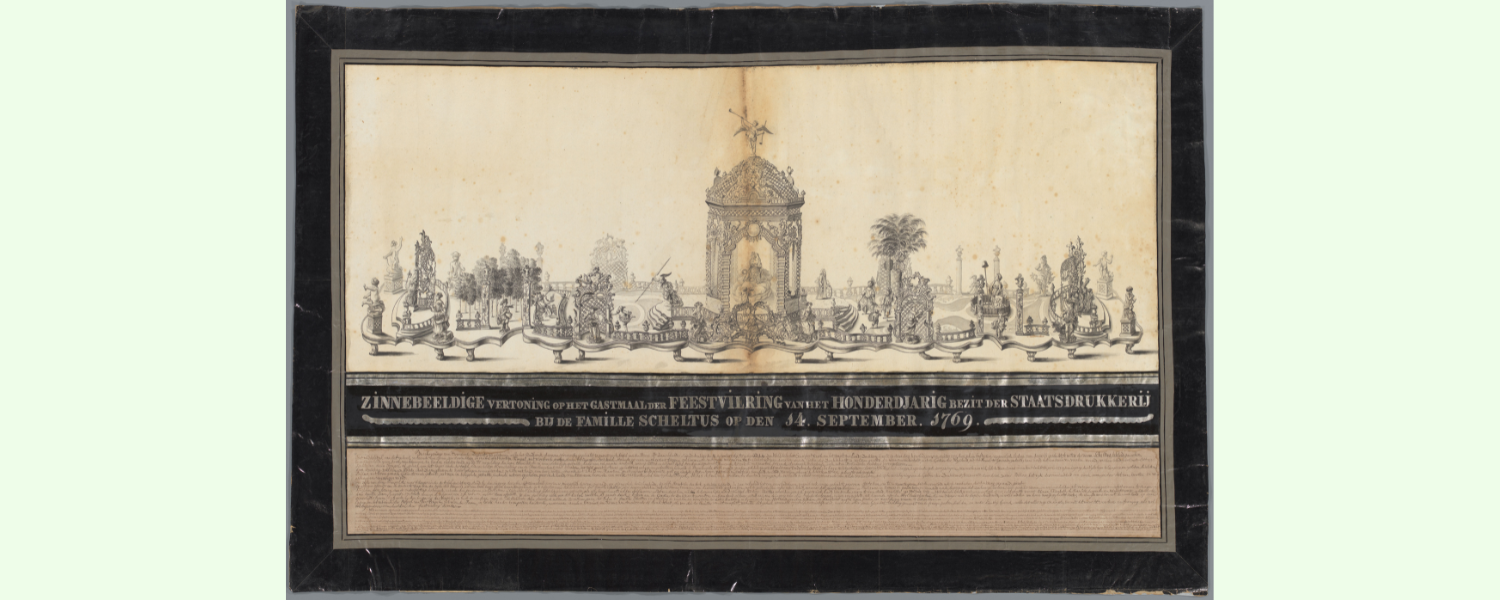Once a fine object was made, it might be recorded in a drawing for a number of reasons. An owner could commission a drawn inventory of his possessions: this occurred most frequently for assemblages of works in silver and gold or other precious treasury pieces. Objects were also drawn as examples of new designs, fashions and customs. Through such images, interested parties could learn about the innovations introduced at the principal courts and in cities that were centres of fashion and taste. Besides, designers and artists practiced their skills by drawing objects, which also provided them with images of admired models. In all these cases, the visual information provided by a drawing was the prime concern.

Cornelis(?) Beeldemaker, a dessert, 1769.
A social designer’s drawings
The physical drawings tend to disappear at social designer Hanneke Gerrits studio, but she saves all her digital drawingsl. Useful for future projects and nice to look back on. She mainly uses her drawings to communicate with the target group. Like during her project Waste Welcome in cooperation with Tante Netty, in which local residents collected plastic to eventually turn it into neighbourhood objects. In the video below, Hanneke talks more about the role of the drawing in this process.
